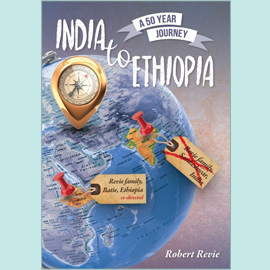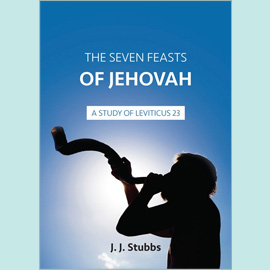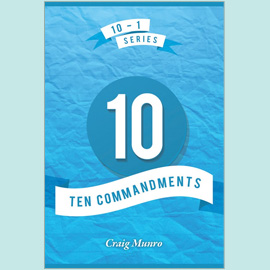Dear John,
Having outlined the necessary tools and attitude of heart required for the effective study of God’s Word, it is now time to get a broad overview of the Bible as a whole. It is, after all, a big book which can daunt the reader. Indeed, it is best seen as a library of 66 different books, written over some 1,500 years by about 40 different writers from a variety of backgrounds and countries. It includes, for example, legislation, historical narrative, biography, poetry, doctrinal and personal letters, architectural descriptions, and predictive prophecy. The very fact that so many distinct books over such a period of time have one predominating theme is a testimony to the one great author – God Himself. Nothing else can explain the amazing coherence of Scripture.
The best way to get a grasp of the Big Picture is to recognise that the books of the Bible fall into clear groupings. The pattern in the Old Testament is quite memorable in itself:
Old Testament
| Pentateuch (5) | ||
| Historical Books (12) | 17 | |
| Poetry (5) | 5 | |
| Major Prophets (5) | ||
| Minor Prophets (12) | 17 | |
| 39 | books |
New Testament
| Historical Books (5) | 5 | |
| Letters (21) | 21 | |
| Prophecy (1) | 1 | |
| 27 | books |
First of all we have the Pentateuch (the 5 books of Moses), which gives an historical survey stretching from the creation of the universe (Gen 1-2) to the arrival of the Israelites on the border of the promised land. The history of mankind from Adam to Abraham is squeezed into a mere 12 chapters; thereafter it is the people of Israel who take centre stage, because God formed them to be His representatives in a sin-darkened world. There follow 12 Historical Books charting the rise and decline of Israel’s kingdom under Saul, David and his successors, the division of the kingdom into north and south, and the final captivity of both parts because of sin. Then come 5 books of Poetry, ranging from Job’s universally relevant examination of suffering and the Psalmists’ poems of lament and praise, to the pithy practical wisdom of Solomon, his analysis of the failure of man apart from God, and his love song celebrating the joys of marriage. The 5 Major Prophets candidly highlight Israel’s spiritual failures as the cause of her captivity, while the 12 Minor Prophets (a title which merely indicates comparative size, not importance), covering a long period from the kingdom to the return from exile, continue to call the nation to repentance. One of the valuable exercises you can undertake is to see how the prophetic books fit into Israel’s history. This is usually made plain in the introductory verses which name the kings who were reigning when the prophet wrote. Those Minor Prophets become much more interesting and intelligible when we place them in their proper context. Amid the darkest times they courageously called the people back to God. Yet through all the gloom of Israel’s breakdown shines the sure hope of the coming of a Deliverer who would never fail but would redeem His people and establish a righteous reign over the entire world. The whole Old Testament resounds with the message, "Behold, he shall come" (Mal 3.1). And this coming Saviour, described as the Messiah (which simply means "the anointed one"), would be the ultimate prophet (fully revealing God to His creatures), priest (finally dealing with sin), and king (governing in righteousness).
After the 400 or so year gap which follows the conclusion of the Old Testament a new note is struck. Matthew introduces his Gospel as "The book of the generation of Jesus Christ [which is simply the New Testament equivalent of ‘Messiah’], the son of David, the son of Abraham". The language sets up a deliberate parallel with the first book of the Old Testament by echoing the structural formulae of Genesis ("These are the generations of…"). Further, Matthew’s Gospel presents the Lord Jesus as the fulfilment of God’s special covenant promises to David (recorded in 2 Samuel 7) and to Abraham (recorded in Genesis 12.1-3). The Lord Jesus Christ therefore is both the long-expected king of Israel and the bringer of blessing to all nations. All God’s purposes find their fulfilment in Him. The rest of the New Testament elaborates on this truth. The 5 Historical Books provide four complementary accounts of the Lord’s public ministry (with different emphases, so that Matthew highlights His kingship, Mark His service, Luke His manhood, and John His deity) which run on into a record of the activities of the early believers. Once the Lord Jesus had ascended back to heaven, they began, after the day of Pentecost, spreading the good news so that the message spilt beyond Israel into the whole world. After this historical foundation comes a series of 21 doctrinal Letters which explain the significance of the work of Christ, the lifestyle expected of Christian believers, the way in which God’s people are to gather for worship and service, and the sure hope of the Lord’s coming again for His people. And the capstone is the New Testament’s one book of Prophecy which takes the wraps off future events by intimating the Saviour’s coming triumph, entitled, significantly, the Book of Revelation.
One of the benefits of grasping this overview is that it enables us to slot any passage we are studying into the grand plan of Scripture. If we are seeking clear statements of Christian doctrine we go first of all to the New Testament letters, in which the Holy Spirit reveals the mind of God for believers of this age (1 Tim 3.15). The Gospels, you see, are inspired historical accounts of a unique period of time in which unrepeatable events took place. The Lord Jesus will never again be born, die, and rise from the tomb. In Matthew 10 He sent out His disciples to preach specifically not to Gentiles but only to "the lost sheep of the house of Israel", whereas in Matthew 28 He ordered the same men to reach out to the entire world. Which commission concerns us today? I know of no Christians who think we should be obeying the first. Even the first part of the Acts records exceptional happenings when new believers assembled together in the Temple precincts, when apostles worked remarkable credential miracles, when saved Gentiles were only gradually accepted into companies of believers, when Paul still observed the Jewish feasts – details which signal a historical context for ever past. This is not to deny the abiding lessons, moral principles, and illustrations of God’s dealings found in these books, but they do not directly describe the age in which we live. In our era the Lord Jesus Christ is at God’s right hand in heaven, the Holy Spirit indwells His people on earth, and God is taking out from the Gentiles a people for His name. Similarly, while the Old Testament was certainly written "for our instruction" it was not written directly to us, but largely to a chosen nation called out for God, a nation given a code of law, a complex ritual of worship, and a geographical slice of land. There is much we can learn from Israel, but we do not belong to Israel but to a heavenly company of people, the church, the body of Christ, and nothing but confusion is created when Bible readers fail to observe the distinction.
A great way of making sense of the Old Testament is to see how it all points to the Saviour. Never forget that although the eternal Son of God entered humanity at His incarnation, He did not begin His existence then. In Old Testament times He was active in creation (Jn 1.1-3), in revelation (Jn 1.18), and in salvation (Jn 5.17). Further, the very structure of Bible history is designed to testify to Him. In the Pentateuch, for example, we have Christ foreshadowed (in types like the Passover Lamb, the Brazen Serpent, the Smitten Rock); in the Poetical Books we find Christ’s feelings (read Psalms 22 and 69 especially); in the Prophets we have Christ directly foretold (in the graphic details of Isaiah 53, so scrupulously fulfilled in His life and death, or the specific birth location announced in Micah 5.2). Someone has described the Old Testament as a beautiful but dimly lit room, the gorgeous contents of which cannot fully be seen and appreciated until bright light streams in from the New Testament. That is why it is often said that the New is in the Old concealed, while the Old is by the New revealed; or, if you prefer it, the New is in the Old contained, the Old is by the New explained. All the unexplained ceremonies, unfulfilled prophecies, and unsatisfied longings of the Old Testament find their answer in the Lord Jesus Christ. Once we see this, the pieces of the jigsaw begin to fall into place. Just bear in mind that God is always first of all thinking of His Son. That being so, how important that we should endeavour to glimpse His glories in the Word (Lk 24.27). To see Christ will help shape our lives, guard our paths, and fill our hearts with praise when we gather to remember Him!
Much love in the Lord Jesus Christ,
David
To be continued.









